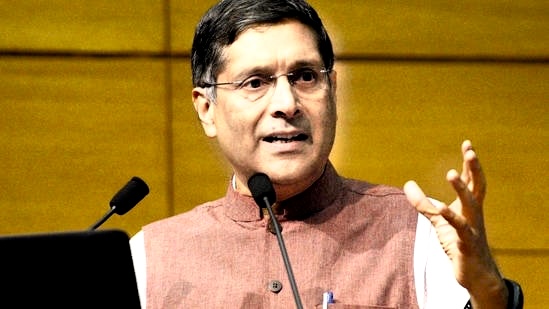Economist Arvind Subramanian, who served as the chief economic adviser (CEA) to the Narendra Modi-led government between 2014 and 2018, recently drew attention to India’s regulatory framework in an insightful piece published by The Washington Post titled ‘India Is Chasing China’s Economy. But Something Is Holding It Back’. Subramanian, now affiliated with Brown University as an economist, raised pertinent concerns regarding the challenges faced by investors operating outside the sphere of major conglomerates like Adani or Ambani when navigating India’s intricate regulatory landscape.
Within the article, Subramanian delved into what he termed the “Modi phenomenon.” This term encapsulates a blend of elements characterized by an amalgamation of heightened publicity, rhetorical assertiveness, and strategic maneuvering within the Indian economic framework, all underpinned by tangible achievements. This observation resonates with the persistent accusations by the Opposition, asserting that the government may be unduly favoring and benefiting large corporate entities at the potential expense of broader public interests.
Subramanian’s remarks highlighted a perception prevalent among investors who aren’t among the elite conglomerates, emphasizing the inherent risks and complexities they face when attempting to navigate India’s regulatory terrain. The observation that “if you’re not the two A’s — Adani or Ambani — it can be treacherous to navigate India’s regulatory byways” underscores the disparity in ease of operation between major players and smaller-scale investors. This inequality in maneuverability within regulatory frameworks can potentially deter domestic investors, fostering an environment where only the most prominent entities feel secure in their ventures.
The economist’s assessment further expounds upon the complex nature of the Indian economic landscape, drawing attention to the contrast between the outwardly projected image of assertiveness and accomplishment and the underlying structural intricacies. The “Modi phenomenon,” as he terms it, blends a foundation of substantive achievements with an overlay of exaggerated rhetoric and calculated manipulation, making it a multifaceted paradigm within India’s economic and political spectrum.
Moreover, Subramanian’s perspective seems to echo the concerns of those critical of the government’s approach towards fostering an inclusive economic environment. There is an ongoing debate regarding whether the government’s policies adequately address the needs and concerns of smaller investors and businesses, or whether they primarily benefit the interests of a select few large corporations.
His assessment of India’s economic landscape subtly hints at the prevalence of bureaucratic hurdles that continue to hinder the country’s growth potential. The perceived prevalence of “red-tapism” and regulatory intricacies might be contributing to a lack of confidence among potential investors, both domestic and international. This, in turn, poses a considerable challenge in reassuring investors about the stability and ease of conducting business in India.
In essence, Subramanian’s observations serve as a nuanced critique of India’s economic dynamics, shedding light on the intricate balance between outward accomplishments and the underlying challenges and complexities faced by investors, particularly those not belonging to the echelons of major corporate entities like Adani or Ambani. His analysis underscores the need for a more transparent, inclusive, and streamlined regulatory environment to foster broader investor confidence and ensure equitable opportunities for businesses across various scales within the Indian economy.

